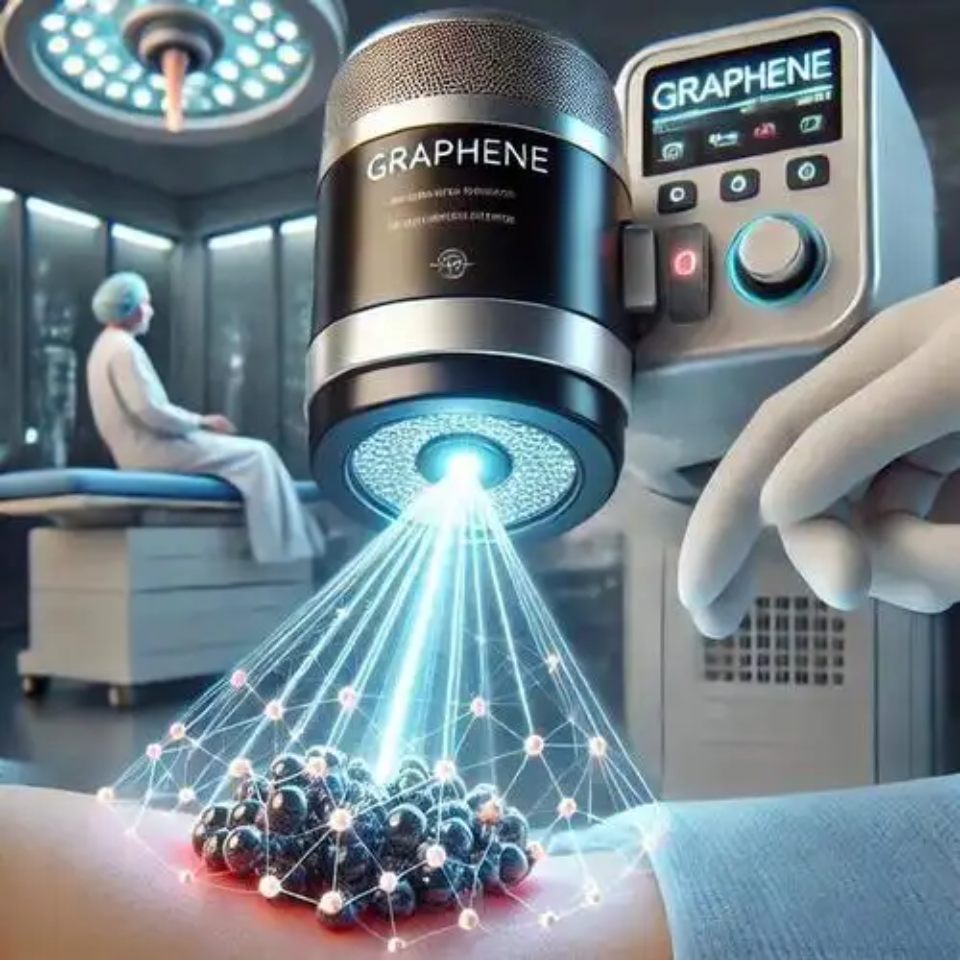Graphene oxide (GO), with its unique physicochemical properties, has garnered significant attention in healthcare and biotechnology. Its high surface area, tunable chemical functionalities, biocompatibility, and excellent mechanical strength make it an exceptional material for advanced medical applications. From drug delivery systems to biosensors and antimicrobial materials, graphene oxide is paving the way for groundbreaking innovations in modern medicine. This article explores its introduction, advantages, applications, and current market trends.

1. Drug Delivery
Efficient drug delivery systems are crucial for improving therapeutic outcomes and minimizing side effects. Graphene oxide offers unique advantages as a drug carrier due to its large surface area, ability to load diverse molecules, and controlled release mechanisms.
Advantages of GO in Drug Delivery
- High Drug Loading Capacity: The large surface area and π-π interactions enable GO to adsorb significant quantities of hydrophobic and hydrophilic drugs.
- Controlled Release: Functional groups on GO can be engineered to achieve pH-responsive or stimuli-triggered drug release, ensuring targeted delivery to diseased cells or tissues.
- Biocompatibility: Properly functionalized GO demonstrates good biocompatibility, reducing toxicity concerns.
Applications in Drug Delivery
- Cancer Therapy: GO-based carriers deliver chemotherapeutic agents directly to cancer cells, enhancing efficacy while reducing damage to healthy tissues.
- Gene Therapy: GO is used to deliver genetic materials such as DNA, RNA, or siRNA to target cells, aiding in the treatment of genetic disorders.
- Vaccination: GO-based systems improve antigen stability and delivery, enhancing immune responses.
Market Trends
The global drug delivery market is rapidly expanding, driven by the growing demand for personalized medicine and advanced therapies. GO-based drug delivery systems are emerging as a vital component in this space, with significant investments in research and development.
2. Biosensing
Graphene oxide’s remarkable electrical and chemical properties make it a highly sensitive and selective material for biosensing applications. Its ability to interact with biological molecules enables the development of advanced sensors for healthcare diagnostics and biomedical research.
Advantages of GO in Biosensing
- High Sensitivity: GO exhibits exceptional electrical conductivity and surface reactivity, allowing it to detect minute concentrations of biomolecules.
- Specificity: Functionalized GO can be tailored to bind specific targets such as DNA, proteins, or pathogens.
- Rapid Response: GO-based sensors provide real-time data, making them invaluable for point-of-care diagnostics.
Applications of GO Biosensors
- DNA Detection: GO biosensors identify genetic mutations or infections by binding to specific DNA sequences.
- Protein Analysis: GO is used in detecting biomarkers, aiding in early disease diagnosis and monitoring.
- Pathogen Detection: GO-based sensors can detect bacteria, viruses, and other pathogens with high accuracy, crucial for outbreak management.
Market Growth
The biosensor market is experiencing significant growth due to advancements in diagnostic technologies and the increasing prevalence of chronic diseases. GO-based biosensors are gaining attention for their precision, speed, and versatility in biomedical applications.
3. Antimicrobial Materials
The rise of antibiotic resistance has necessitated the development of alternative antimicrobial strategies. Graphene oxide, with its intrinsic antimicrobial properties, is an excellent candidate for creating coatings and materials that combat microbial infections.
Advantages of GO in Antimicrobial Applications
- Broad-Spectrum Activity: GO exhibits strong antibacterial and antifungal properties, making it effective against a wide range of pathogens.
- Durability: GO-based antimicrobial coatings are long-lasting and resistant to environmental degradation.
- Non-Toxicity: Properly functionalized GO demonstrates minimal cytotoxicity to human cells while effectively eliminating pathogens.
Applications of Antimicrobial GO Materials
- Medical Device Coatings: GO is used to coat implants, catheters, and surgical instruments, reducing the risk of infections.
- Wound Dressings: GO-based dressings accelerate healing while preventing microbial growth on wounds.
- Hospital Surfaces: GO coatings are applied to hospital equipment and surfaces to maintain sterile environments.
Market Potential
The global market for antimicrobial coatings and materials is expanding as healthcare systems prioritize infection control. GO’s multifunctional properties position it as a key material for the next generation of antimicrobial solutions.
Conclusion
Graphene oxide is revolutionizing healthcare and biotechnology with its applications in drug delivery, biosensing, and antimicrobial materials. Its ability to address critical challenges such as targeted therapy, rapid diagnostics, and infection control highlights its immense potential in modern medicine.
From enhancing the effectiveness of cancer treatments to enabling real-time detection of pathogens and preventing hospital-acquired infections, GO is driving significant advancements in healthcare. As research continues to unlock new capabilities, graphene oxide is set to become an integral component of innovative medical technologies, contributing to improved patient outcomes and global health advancements.

